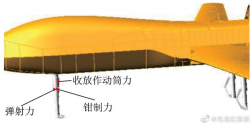But these platforms are procured on a basis of opportunity cost, with consideration of industry availability/advancement, and with consideration of the timing of strategic demands.
There is always room for improvement and better successor classes, but better is the enemy of good enough and that is especially the case if you factor in time and strategic planning.
However I do not see any of this having any specific bearing on the PLAN's "lull" in shipbuilding over the last year or two, as I think that lull can very reasonably be explained simply by the PLAN seeking to establish what the long term trajectory of the navy is meant to be from a strategic procurement point of view.
I'd also be very surprised if Chinese nuclear submarine construction didn't receive a huge funding boost from 2020 onwards, given the completion of the 2nd brand new Assembly Hall in 2020. That followed on from the 2016 completion of the 1st Assembly Hall.
---
The pre-VPM Virginia SSN costs $2.8 Billion.
The Astute SSNs came in at approx $2 Billion.
So my guess is that the latest Chinese SSNs are in the range of $1-1.5 Billion each.
And I expect they are ramping to at a minimum of 3 SSNs per year.
So these 3 SSNs would cost as much as the 4 Type-054 and 4 Type-052D which we would typically expect to be produced per year.
But as I've said previously, I think they're going higher on SSN production.
After all, it's still easily affordable in terms of procurement and maintenance budgets.
Last edited:


